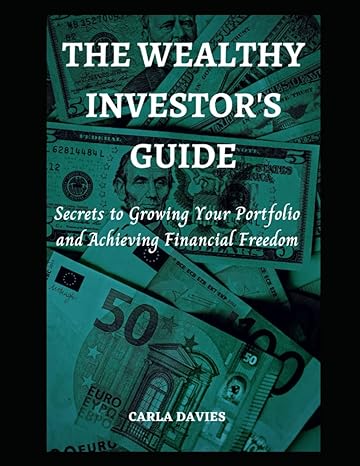Answered step by step
Verified Expert Solution
Question
1 Approved Answer
Ms. Barstow purchased a limited interest in Quinnel Partnership in 2022. Her share of the partnership's 2022 business loss was $5,000. Unfortunately, Ms. Barstow couldn't
Ms. Barstow purchased a limited interest in Quinnel Partnership in 2022. Her share of the partnership's 2022 business loss was $5,000. Unfortunately, Ms. Barstow couldn't deduct this loss because she had no passive activity income, so she is carrying it forward into 2023. Quinnel Partnership projects that it will operate at breakeven (no income or loss) for several years. However, Ms. Barstow believes that her partnership interest is a solid long-term investment, and she has no plans to sell it. On January 1, 2023, Ms. Barstow must decide between two new investments that are comparable in terms of risk and liquidity. She could invest $100,000 in TNB Limited Partnership, and her share of the partnership's 2023 business income would be $8,000. Alternatively, she could invest $100,000 in a high-yield bond fund that promises a 10 percent return. (Ms. Barstow would receive $10,000 interest income in 2023.) Use Tax rates for capital gains and qualified dividends. Required: a-1. Compute the after-tax cash flow and after-tax return of investing in TNB Limited Partnership and the high yield bond fund assuming Ms. Barstow has a 24 percent marginal tax rate on ordinary income and is not subject to the Medicare contribution tax. a-2. Which investment generates a higher after-tax return for 2023? b-1. Compute the after-tax cash flow and after-tax return of investing in TNB Limited Partnership and the high yield bond fund assuming Ms. Barstow has a 37 percent marginal tax rate on ordinary income and is subject to the Medicare contribution tax on either the $8,000 partnership income or the $10,000 interest income. b-2. Which investment generates a higher after-tax return for 2023? Complete this question by entering your answers in the tabs below. Req A1 Req A2 Req B1 Req B2 Which investment generates a higher after-tax return for 2023? Which investment generates a higher after-tax return for 2023? Tax rates for capital gains and qualified dividends Rate 0%* 15%** Married Filing Jointly Married Filing Separately $0-$83,350 $83,351-$517,200 $517,201+ $0-$41,675 $41,676-$258,600 $258,601+ 20% Single $0-$41,675 Head of Household $0-$55,800 $41,676-$459,750 $459,751+ $55,801-$488,500 $488,501+ *The highest income amount in this range for each filing status is referred to as maximum zero rate amount.. **The highest income amount in this range for each filing status is referred to as maximum 15-percent amount
Step by Step Solution
There are 3 Steps involved in it
Step: 1

Get Instant Access to Expert-Tailored Solutions
See step-by-step solutions with expert insights and AI powered tools for academic success
Step: 2

Step: 3

Ace Your Homework with AI
Get the answers you need in no time with our AI-driven, step-by-step assistance
Get Started


